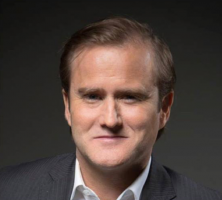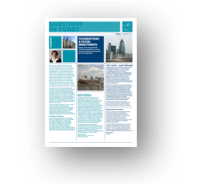‘For foundations, impact investing can be a catalyst for change on the ground’

Now that the Foundation has joined the Divest/Invest movement and is about to finalize its first social impact investments, we wanted to hear the views of Gaspard Verdier, Founder and Director of Simandef, a pioneering consulting firm in the field of ‘impact investing’ in France. Focus on a new practice that raises questions on the very essence of philanthropic engagement!
Fondation Ensemble has just invested in the Impact Finance Fund and is about to do so in ATEC. Don’t you see this as mixing up the issues?
The Foundation is joining many international and French foundations aiming to identify, support and develop innovative solutions that ensure sustainable impact in the long term. In that spirit, and to meet needs and demands on the ground, financial tools are becoming more diversified. The case of ATEC is a typical example. The Foundation is well acquainted with biodigester technology and has witnessed its positive impact, particularly in Cambodia, through grants to various projects in recent years. Now ATEC, a social enterprise based in Cambodia, is opening up its capital to investors and raising funds to deploy this technology at the national level, offering thousands of Cambodian small farmers and their families access to renewable energy that is beneficial for both the environment and their own health. For the Foundation, investing in ATEC means not only being part of the scaling-up of this solution but also ensuring that the enterprise remains true to its social mission. Impact investing enables investors and entrepreneurs to work towards the same goal, to address the same social and/or environmental challenges, and to chart a new course together in terms of impact. This is fully in line with the Foundation’s philanthropic mission; market forces are a tool, but the investment serves the mission, contributing to a (real!) inclusive economy with an impact…
Even if there is still a risk?
A first myth needs to be exploded; investments involve varying degrees of risk. Impact Finance Fund is a listed liquid fund whereas ATEC is a start-up. As with any investment, one first has to define a set of constraints, its impact investment strategy and its level of understanding and monitoring. Investing in a start-up, involves a high level of risk, but it is also a catalystic bet in support of a social innovation, and scaling it up. At this stage, it seems to me that foundations and philanthropists have a major role to play alongside their strategic partners. On the ground, there is a need for this type of investor, who is familiar with the eco-system and the sector and that can provide “patience” capital and impact disciplin. If we attract only financial investors, we run the risk of destroying a social innovation, the germ of a solution, whereas foundations are in a position to assess just this. On the other hand, if the investment winds up according to expectations, the money invested can be used several times…
So grant-making is no longer the sole means of serving the public benefit?
This is a controversial question in France (and elsewhere, too)! Rest assured that while it is not a question of replacing grants, the idea of a ‘continuum’ between donation and investment is certainly gaining momentum: donation for seed and innovation financing, and investment when associations and social enterprises need to scale up.
Nevertheless, the question is a valid one for the sector. Philanthropy is well aware that it does not have the means to provide funding for all the social and environmental issues facing our planet (even if Bill Gates managed to persuade all the billionaires to give up half of their fortunes or more!). Donations will continue to be a scarce resource; impact investing is a possible way of delivering solutions that serve the common good … backed by economic models. This line of thinking may not be obvious to everyone but, given what is at stake, we need to be pragmatic; to test and experiment.
How are investors informed of the results achieved?
Impact is the keystone for demonstrating the validity of this approach. On this point, history is being written every day, and there is much ongoing debate. Funds have clear specifications and explain their goals, strategy and methodology for measuring impact, which, like financial reporting, is regularly communicated to investors. At the enterprise level, it is important to ensure that the social mission is reflected in quantified impact objectives that set the course for operational management. If the social entrepreneur can specify some key dimensions that can be monitored to validate the impact strategy, this is often more reassuring than an overabundance of indicators. Foundations, in particular, can bring their influence to bear on impact issues (by questioning, guiding, validating, etc.); as philanthropic investors, they will in a certain sense put a seal of approval on the quality of the venture. Indeed, for this reason, they are often much sought after by impact funds and projects.
Is the US withdrawal from the Paris climate agreement a bad sign to investors?
Paradoxically, no. In my view, a different event will have much greater repercussions. On the same day as Donald Trump’s announcement, Exxon shareholders managed to convince the oil company’s ‘climate skeptic’ (an understatement) management to take climate risks into account. While this is only a first step, the message has far-reaching consequences for the economic sector. Those who hold the reins of power in the world financial sector, like BlackRock (which manages five trillion dollars), now consider the environment to be not only an ethical and moral issue but also a risk management issue. Even if there is still a long way to go, foundations working actively on environmental issues, particularly through Divest/Invest, have been in the vanguard of this movement. Now it is up to foundations to keep the dominoes falling … sustainable food, combating inequality and exclusion. As investors too, foundations have the opportunity to use resources to advance their mission!

For further information:
‘Questions de fonds No. 1’ (in French)
du Centre Français des Fonds et Fondations (French Foundation Center) – dec 2013
